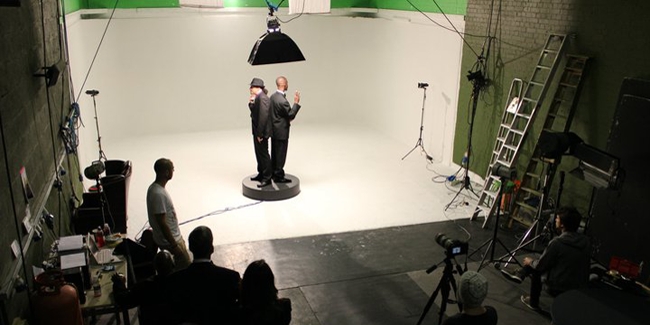Client/Crew Relations
Building a good relationship is essential. After all, the talent and/or their management is putting their money and reputation in the director's hands. They need to be able to trust your decision making and feel comfortable enough to give their best performance.
Everybody needs to be sure of their role. Too many “hangers-on” doing a job that takes just one person can slow things up in the long run. Especially in larger groups, people may grow complacent, assuming that if they don't do something, someone else will.
Planning
“Prior Planning Prevents Piss Poor Performance!”
It's always a good idea to run through the treatment; from there you can brainstorm the best approach outlining your concept and how you are going to deliver it. A Shot List should be made listing the key shots that you need to include which is followed by a Shooting Schedule, time-tabling what gets shot and in what order.
This all depends on what talent, what location, what sets or what equipment is available at any one time. Be prepared to shoot things out of chronological sequence if your green screen is only available in the evening or your dancers can only spare an hour in the morning.
Coping when things that don't go according to plan
Realistically, something is likely to go wrong.
The worst thing you can do is panic; it'll only make it more difficult to fix the issue. Your state of mind can rub off on other people and you don't want to give the client, or crew for that matter, the impression things aren’t going well, especially if it turns out it’s not that big of a deal anyway.
Tai recalls an incident where a singer turned up 2 hours late not knowing her lyrics... As useful as planning is, sometimes you also have to be flexible with your ideas - adapt the concept and make use of the tools you have in post to work with what you've got. Ideally you want to have enough takes of the track sung (not just lip synched!) all the way through, but in this particular case the solution was improvised with duplicate jump cuts.
Artistic devices/preferences
It helps to have a strong idea in your mind of the end product, particularly for the big moments, e.g. the openings, choruses, endings and any parts that stand out to hook the audience. When it comes to the editing stage it is good practice to arrange your clips into folders according to relevant criteria like: location, mood, character, scene, singer, dance, shot type etc. This will make the shot selection process simpler than rifling through all of the footage lumped together.
How do you stand out with the multitude of video content around these days? According to Tai an engaging video is one that shows you something you haven’t seen before or shows you something you’ve seen before but in a different way. It doesn't have to be spectacularly complicated - videos comprised entirely of found footage can be pretty interesting.
When it comes to specifics, here are some of Tai's top visual tips:
- Anything can look cool in slow motion (he jokes). It was shot in one continuous take at 50 fps, but sung at 2x speed, so Chris Martin syncs with the track at normal speed when everything else is played back half speed. However, high frame rates played back at normal speed can look weird. This is called the Soap Opera Effect.
- Nothing is ever finished until you grade it – from unifying the lighting and/or colour pallet of shots to creating a particular feel and emotion – grading is essential! A recent example; shooting colder tones in camera to ensure purer whites then warming the temperature in post through RGB colour curves.
Quick Grading Example
- Rhythmic editing is friendly to the eye and plays on your natural rhythm – everything has a rhythm! Matching editing and on-screen action to the (sometimes changing) rhythm, pace and speed of the track really makes an impact and keeps the viewer engaged.
Example of Rhythmic editing – Skrillex ‘First Of The Year'
It takes dedication, but making a successful pop promo need not be a chaotic affair. Getting a good performance out of clients in a timely manner is a mark of a good director - with adequate preparation and forward thinking, you can make something great!
By: Eboni Patterson
(29/05/14)


